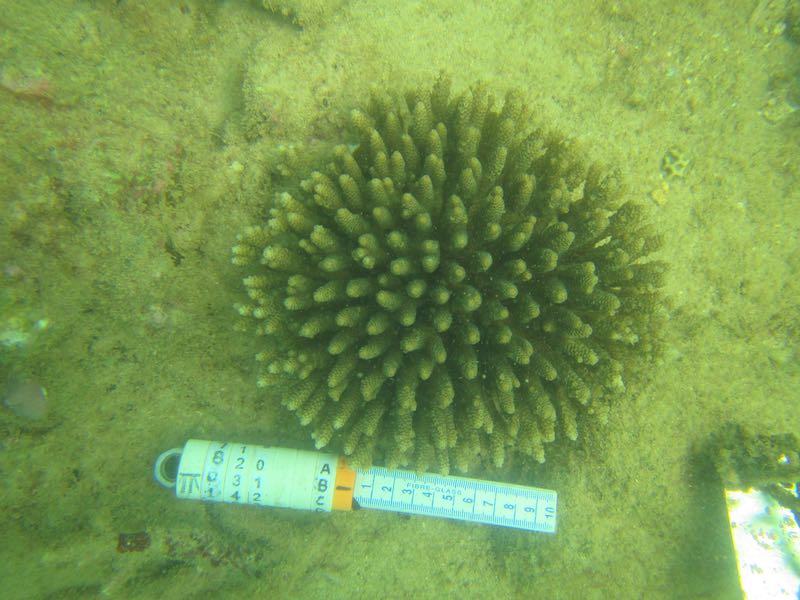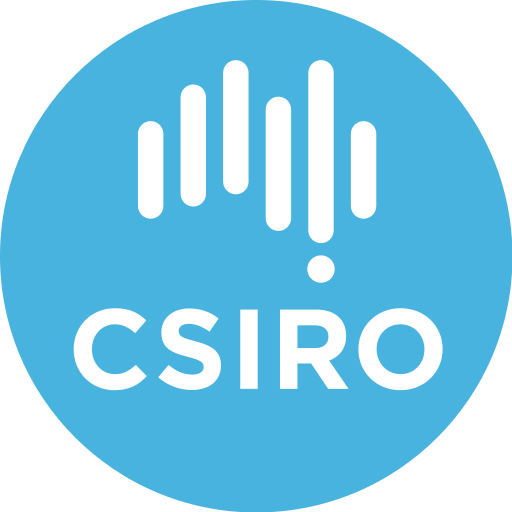Keyword
Earth Science | Biological Classification | Animals/Invertebrates | Cnidarians | Anthozoans/Hexacorals
41 record(s)
Type of resources
Topics
Keywords
Contact for the resource
Provided by
Formats
Update frequencies
Status
draft
-
This collection of Southern Hemisphere Deep-sea Corals consists of antipatherians (black corals), gorgonians (soft corals) and scleractinians (stony corals). This includes both live caught, sub-fossil and fossil material. Some samples date back to ca. 20,000 years before present; some of the un-dated material (based on work on samples sent to Californian Institute of Technology) are likely to be very much older. The collection is housed at CSIRO Marine Laboratories in Hobart, Tasmania.
-

An understanding of coral population dynamics (demography) is needed when designing and evaluating studies that aim to detect the effects of natural and anthropogenic mediated impacts on coral communities, and in particular when making predictions about the likelihood of and speed of recovery from such impacts. This study was undertaken to gather baseline data on demographic processes to improve our understanding of the fundamental population dynamics in relation to recruitment, growth and survival of reef building corals in the Pilbara. Measurements of key demographic processes were carried out annually over two years (April 2014 and March 2015) at Enderby and West Lewis Islands in the Dampier Archipelago, Western Australia. Locations sampled at Dampier Archipelago (where coral populations existed) were relatively unimpacted by bleaching mortality that occurred between 2011-2014. At each location permanent transects were established sufficient to provide up to several hundred tagged colonies in order to derive valid demographic rates (growth, mortality, shrinkage, fragmentation) for individuals of each size class, as well as to allow estimates of recruitment. Censuses were conducted using a combination of wide angle photographs of the permanent transects, detailed field censuses of recruits and adult corals, and direct measurements of tagged colonies. The corals investigated in this study were Acropora millepora, Turbinaria mesenterina and massive Porites spp. (mainly P. lobata and P. lutea). These species were chosen because they were among the most common coral taxa on reefs of the Pilbara, and on many reefs globally, making them fundamental to reef primary productivity and carbonate accretion, and because they have contrasting life histories and susceptibilities to disturbances.
-
CMAR has conducted a number of stock assessment surveys for finfish, beche-de-mer and trochus on the reefs of Torres Strait. During the course of the suveys, habitat data was also collected albeit at a coarser level of taxonomic resolution. The primary objective of this study was to characterise the reefs of Torres Strait in terms of the biological and habitat data collected during these surveys and to relate the nature of the reefs to the available physical data. Information collated for this study included comprehensive datasets on reef fish, beche-de-mer and seagrass; most of which was identified to species level. Information on corals and algae was based on visual estimates of percentage cover morphotypes. Little data on the other reef biota was collected. SOURCE_DATASET CRUISE_ID CRUISE_NAME CRUISE_YEAR RRI1 HE01 Reef Resource Inventory HE01 1995 RRI2 HE02 Reef Resource Inventory HE02 1995 WR95 WRS Warrior survey 1995 1995 RRI3 JK01 Reef Resource Inventory JK01 1996 RRI4 JK02 Reef Resource Inventory JK02 1996 WR96 WRS Warrior survey 1996 1996 WR98 WRS Warrior survey 1998 1998 WR00 WRS Warrior survey 2000 2000 ETS2 ETS2 East Torres Strait 2002 2002 WE02 WRS Warrior survey 2002 2002 WR04 WRS Warrior survey 2004 2004 ETS5 ETS5 East Torres Strait 2005 2005
-
The dataset comprises catch records of invertebrates and fish from epibenthic sled deployments completed on research voyage SS 03/2005. The survey design was a natural experiment (i.e. control-impact, but not before-after) to test the long-term, broadscale effects of prawn fishing on non-target species and habitats. Deployments were stratified by fishing intensity (three strata) and day/night. The survey was repeated in three regions: (a) north of Groote Eylandt, (b) north-east of the Vanderlins, and (c) north of Mornington Island. The number of deployments completed as part of the natural experiment was 124. Two additional deployments were completed for other reasons.
-
This dataset contains species distribution, abundance and identity data of benthic invertebrates from Batemans Bay, NSW. Epifauna samples from the inter-tidal and subtidal rocky coasts around the bay were sampled twice, in November 1990 and August 1991. The data were taken as a control site for similiar sampling in Jervis Bay. The data are part of the Jervis Bay Marine Ecological Study. NB - As the database has been lost, the only data still available are those published in the JERVIS BAY BASELINE STUDIES Final Report.
-
This dataset contains species distribution, abundance and identity data of benthic invertebrates from Jervis Bay, NSW. Epifauna samples from the inter-tidal and subtidal rocky coasts around the bay were sampled at 3 monthly intervals between November 1988 and August 1991. Taxa identified 51 species appearing consistently at most temporal and/or spatial scales on intertidal and subtidal reefs in Jervis Bay. The data are part of the Jervis Bay Marine Ecological Study. NB - As the database has been lost, the only data still available are those published in the JERVIS BAY BASELINE STUDIES Final Report.
-
This record describes the collections of benthic biota (and their derived data) from one Marine National Facility charter voyage conducted under Project 4 - Benthic biota of volcanic seamounts, seeps and canyons of the GAB - of the Great Australian Bight Deepwater Marine Program (GABDMP): IN2015_C01. A key objective for which is to characterise the composition, abundance and distributions of benthic fauna (seabed animals) associated with volcanic seamounts, canyon and seep zone habitats in in ~1000-5000 m depth, within and adjacent to the Chevron lease areas in the GAB. Benthic biota samples were taken at 6 potential seep, 5 volcanic seamount, and 3 deep outcropping rock sites. Epibenthic biota were collected using the beam trawl, epibenthic sled and rock dredge; macro-infauna were extracted by elutriation of sediment collections taken using the ICP and the Smith-MacIntyre grab. The invertebrate specimens were identified to operational taxonomic units (OTU) and photographed on board and shipped to Museum Victoria, from where selected taxa were distributed to taxonomic experts for identification. Macro-infauna samples were sorted to OTU in the lab and specimens treated the same as epifauna for further identification. Specimens were distributed to various Museum collections (including SAMA, NMV, AMS) for registration and curation. All fishes were identified to OTU on board and shipped to the Australian national Fish Collection (ANFC) where they were registered and databased. A series of workshops were held bringing together fish expert taxonomists to identify the collection and distribute representative sub-collections to various museums. Taxa targeted for detailed taxonomic identification are: sponges, anemones, octocorals, polychaetes, molluscs, echinoderms, crustacea (select groups), pycnogonids and fishes.
-
This record describes the benthic assemblage survey data collected as part of the 1993-1996 South East Fishery Ecosystem Study undertaken by CSIRO Division of Fisheries. Benthic sled tows (c.4 per survey) were carried out at selected locations on transects across the continental shelf and in intensive survey areas in eastern Bass Strait, south-west Victoria, and south-west NSW waters. Data were collected in July 1993 (cruise SS 05/93), August 1994 (cruise SS 05/94), April 1996 (cruise SS 02/96) and November 1996 (cruise SS 06/96). Large collections of benthic invertebrates were identified and many photographed. As part of the analysis stage of the project, these assemblages wil be related to substrate characteristics on the one hand and fish faunal assemblages on the other.
-
Australia has gazetted an ambitious national network of Commonwealth Marine Reserves that includes the iconic Huon and Tasman Fracture reserves off Tasmania where seamounts (‘undersea mountains’) support unique deep-water coral reefs. These reefs rank among the most bio-diverse globally. Protection of deep-water coral reefs is a high-priority conservation concern nationally and internationally because deep-water corals are very fragile, easily impacted by human activities including bottom trawling, and are believed to recover very slowly. These corals may also be highly vulnerable to climate change because projected changes in water chemistry could limit the ability of corals to build calcareous skeletons. Despite these concerns, and Australia’s significant investment in marine conservation, several fundamental ecological issues remain to be evaluated. These include defining the spatial extent of deep-sea coral communities inside and outside the Tasmanian reserves, and evaluating the resilience of the communities to bottom trawling. This information is important to understanding the dynamics of deep-sea communities globally, and for developing and implementing conservation management plans. The survey aboard RV Investigator set out to determine the spatial extents of deep-sea coral communities in and adjacent to the Huon and Tasman Fracture reserves, and quantify changes in the communities by comparing samples taken in 2018 to samples taken, using similar methods, in 2007 and 1997. There was supplementary sampling on the heavily trawled St. Helens Seamount which was surveyed in 2008. This metadata record refers to the image data collected during the survey. The imagery collected for this project have been registered to the 2018 incidence of the CSIRO VARS database, where annotations have been added. The annotations collected for this project have also been linked to the Oracle data base BHIMAGE and the associated videos and still images have been archived as described in MarLIN record 14436 'Benthic Habitats Video Image Archive'.
-
This record describes video and still camera data collected using sled-mounted and towed camera arrays as part of the 1993-1996 South East Fishery Ecosystem Study undertaken by CSIRO Division of Fisheries. Sled-mounted video and still cameras and/or Towed Camera Array (TACOS) tows were carried out at selected locations on transects across the continental shelf and in intensive survey areas in eastern Bass Strait, south-west Victoria, and south-west NSW waters. Data were collected in July 1993 (cruise SS 05/93), August 1994 (cruise SS 05/94) and November 1996 (cruise SS 06/96). The data from these camera surveys were used in conjunction with benthic sled samples, acoustic data and sediment samples to assess substrate types and provide information about benthic faunal assemblages of the region.
